5th September 2023
The Spokesmen Cycling Podcast
EPISODE 338: Bikemap: In conversation with Bruna de Guimaraes
SPONSOR: Tern Bicycles
HOST: Carlton Reid
GUEST: Bruna de Guimaraes
TOPICS: Interview with Bikemap’s Chief Operations Officer Bruna de Guimaraes
TRANSCRIPT
Carlton Reid 0:13
Welcome to Episode 338 of the Spokesmen cycling podcast. This show was engineered on Tuesday 5th of September 2023.
David Bernstein 0:28
The Spokesmen cycling roundtable podcast is brought to you by Tern bicycles. The good people at Tern are committed to building bikes that are useful enough to ride every day and dependable enough to carry the people you love. In other words, they make the kind of bikes that they want to ride. Tern has e-bikes for every type of rider. Whether you’re commuting, taking your kids to school or even carrying another adult, visit www.ternbicycles.com. That’s t e r n bicycles.com to learn more.
Carlton Reid 1:04
I’m Carlton Reid. And welcome to the second episode about cycle routing apps, both episodes of which were uploaded at the same time. On the previous show, I talked with Richard Fairhurst of Cycle.travel. And here, I talk with Bikemap’s Chief Operations Officer Bruna de Guimaraes. And where are you right this time?
Bruna de Guimaraes 1:31
So I’m currently in Munich, in Germany. And yeah, but I’m from Brazil originally.
Carlton Reid 1:38
And how long have you been with with Bikemap?
Bruna de Guimaraes 1:42
I’ve been with Bikemap since November last year. And it’s been a great ride,
Carlton Reid 1:49
literally. And and
Bruna de Guimaraes 2:02
Literally!
Carlton Reid 1:52
Where were you? So let’s go through a biography of you. Before we even get into what Bikemap is? Let’s get into you. So where were you before Bikemap? Give the trajectory.
Bruna de Guimaraes 2:03
I’m happy to give because this is a really interesting way on how I landed in back live. But I actually graduated in law. So I became a lawyer. And that was in Estonia, which is a completely different story on how I ended up in Estonia all the way from Brazil originally. And I lend him in the software industry as if you know, the Estonia is like a land of digitalization. And so many companies are coming out of there. And especially so many unicorns. And I landed in Pipedrive, which is became a big unicorn in the software industry. And I fell in love with this world in a subscription based businesses and just having this contact with the users. And in Pipedrive, it was responsible for the whole business development. And I had a mini life crisis at the time because I did not know what business development actually meant. But I got the CEO at the time to be my mentor and teach me everything I know today. And as I said, business development is so broad, that my area was more related to product strategy. So basically everything when you’re trying to find a country to go to when you’re trying to find a market to expand your product to you cannot just think about going there. You have to take many things in consideration, such as localization, such as pricing strategies, such as product strategy, and maybe even a strategy or how you get into these countries. Maybe it’s through partnerships, maybe it’s through sales, maybe it’s through integrations. And what we did there in Pipedrive, was actually that my responsibility was to find these countries, and actually adapt the product and create a strategy to enter the market, with partnerships with integrations, and then a sales team would come in. And that was my world for multiple years. I continued developing in the CRM space after I moved to Germany. And that’s also a completely different story, because it involves moving to a different country because of because of a love story. But I continue to decide the SAS industry consulting and advising for a lot of CRM and software businesses.
Carlton Reid 4:34
Jump in there because anybody who doesn’t know Customer Relationship marketing is what you mean by CRM, yes?
Bruna de Guimaraes 4:39
Exactly. It’s basically a tool right that you can manage your relationship with their with their customer. So all the data you have also managing your sales processes. So it was towards all b2b. And I’ve been in this industry for eight years and I’m I had a little bit of contact with the b2c industry. But it was only last year, where then I was contacted by the headhunter of bike map to actually enter and try to help bike map to elevate to the next level. So bring a little bit more of a experience from a different industry to see if we could actually take pipeline to to the level that it deserves to be.
Carlton Reid 5:25
And have you done so far.
Bruna de Guimaraes 5:27
It’s really good. It’s, as I said, it’s been a ride. And I actually see a lot of similarities, if I must say, because as I mentioned, in the b2b space, and especially in the CRM space, where I was, I used to work with a lot of small and medium businesses. So it wasn’t working with enterprises and a long sales cycle, it was actually a very short one. So we had to deal with a lot of product lead growth, which means a lot of your product is your Sales Machine, your contact to your customer is through the product, you don’t have time to actually talk to every customer. And this is something I see very similar in the b2c industry. So this is what we’re trying to do. And this is what we have been doing in bike Mac now, and talking to our customers and really understand them based on the data that they actually use the product on the review that they give to us and the Apple Store and the Google Play Store, and the communication that we have with them through our support system.
Carlton Reid 6:31
Because you have a lot of competitors, many of whom, in fact, the majority of whom are free. And I’m kind of looking here at you know, things like you know, that people will have on their phones and use all the time, Google Maps and Apple Maps. So you are competing in a marketplace, where there’s some incredibly good free products. So why are people paying good money to subscribe for a month, six months a year to bike map?
Bruna de Guimaraes 7:01
That’s a great question. And I love to say that they are really our biggest competitor because that’s what been used by everyone until today. But the differentiator of bike map specialty is really the fact that we have this community aspect. So if you think about people going through these routes every single day, or when they plan a route to with their friends or with their family, you have actually this aspect of you know that someone has been through that through there. And they really have this trustworthiness. Because one thing is you’re being guided in Google Maps and how many times you were living in the city, for example, I don’t know what has how it’s been with you. But with me, if I want to go somewhere, even with my bike for transportation reasons, I know that there is a faster route, I know that there is a safer route for me, and Google Maps gives me just maybe what’s better regarding traffic, may be what is the fastest. But that might not be my favourite profile of my favourite decision. I have a daughter, for example. So I want to make sure that the rides that I take with her, even if it is from point A to point B, or if it is a tour over the weekend, it’s actually the safest way possible. So I want to make sure that it is the recycling lane, I want to make sure that people with kids have done this route as well, but that they can vouch for this route. This is the main thing that differentiates bike map to Apple Maps and Google Maps. And of course, our community reports as I said, so you want to know during your route to where you can have a resting spot where you can actually pump your your tires, if there is any issues or charge your eBike This is what makes bike maps special, our community aspect. So
Carlton Reid 9:01
are you saying that it’s like a ways like feature in that it’s plotting where people actually go. And that gets mixed up into your algorithm? It’s it’s not it’s not something that’s served up? From a server, it’s actually it’s all being fed back into the system?
Bruna de Guimaraes 9:19
Exactly. Nothing that you see in the system is actually done by us. It’s all by the community. So what we do is just give you the best route possible for you as a user and you as your profile. And everything else is populated by the community by our almost 9 million users worldwide.
Carlton Reid 9:43
And which countries are bigger than others? Where are your biggest markets where you’re where the not as big as market but also most the most users who are using this, you know, really frequently?
Bruna de Guimaraes 9:56
Yeah, as you can imagine as a Austrian company And Germany, Austria, Switzerland, the dark market, the back region, as we like to call it is our biggest market. But of course, Italy friends, you say the United States as well. And funnily enough, we have a really big user base in Brazil and in Korea,
Carlton Reid 10:19
and then I’ve got the app open at the moment on my phone. Because I’ve got, like, you kindly sent me a code to access this. And one of the benefits of membership is you can you can swivel through the variety of maps. So there’s open cycle map is probably the kind of the base one, but then you’ve got a whole bunch of other ones, including, like, an open like a satellite view, as well. But when you look at products, like Apple, Apple Maps, net, right now, only certain cities are being mapped, you know, with with bike routes, by Apple, but you can imagine it in the fullness of time, because they are not just they’re not providing just the routes, they’re also providing the the actual maps. So you know, they’re sending cars and people on foot around getting incredibly detailed maps, presumably, you know, with with speed limits, and signs read by artificial intelligence to learn and populate that map. So do they not have this incredible advantage, you know, companies like Apple, but once once they get up to speed, and once they you know, do other, you know, many other cities apart from just London and certain key cities, when they can map everywhere, they’re gonna eat you for for breakfast, aren’t they because they provide the routing and the maps whereas you don’t provide the maps, you’re you’re you’re sucking your maps in.
Bruna de Guimaraes 11:47
I mean, we do provide the navigations for for the users as well, right? So the differentiator really is just the community aspect. You can get this information from open street maps, we also use it and we also the Apple can do it. But the community aspect, as I mentioned before, is really what makes bike math different. You want to as a person, especially in the industry, nowadays, where technology is just consuming. Everything AI is consuming everything you want to trust the human, especially when it comes to a safety feature. And that’s why I like to say that safety is one of our biggest values, if not the biggest value that we have a sitemap because you want to trust the system, you want to trust what you’re using, and you trust more a person, a neighbour, a friend that has been through that, than actually technology nowadays, it’s kind of a paradox. But at least that’s what I see more and more happening. We want to become more and more human, every single day more.
Carlton Reid 13:00
In Germany, and in places like Cambridge in the UK, you basically have, you know, down to streetlamp level on open on OpenStreetMap, where the community of map users and map contributors have contributed so much. It’s just so so much more dense than than even an Ordnance Survey map or just you know, you know, even the best topographical maps will never have this level of detail that you’ve got on Open Street Map. But that’s that’s true in certain areas, and certain countries where there are an awful lot of willing contributors who are doing that. But in places you know, there are there are there, there are parts of the world where there aren’t that many tech tech savvy people populating maps. So you’re not going to have some cities are going to be complete. I’m presuming going to be almost completely dark to Open Street Map type products. So how do you how do you grow in in those places where the mapping probably isn’t anywhere near as good as somewhere like Germany, or places like Cambridge in the UK?
Bruna de Guimaraes 14:14
Yeah, that’s, again, the community aspect is what is fascinating about bike map. We have users that travelled the world planning trips and planning routes through throughout the world. They do big, long cycling tours. And that’s how they populate the app for us. We have most of these places, being populated by existing users, for example, in Germany, they are Germans, but they’re travelling the world, or they are Brazilians and they’re travelling the world. And this is where it makes these routes even more special from the point that you actually mentioned
Carlton Reid 14:58
and how do you know The routes that are in there are put kind of like inverted commas here, like family friendly routes, because you could have a whole bunch of, of really keen cyclists who will take the routes that they want to use, but it’s not the route that you know, a brand new cyclists would want to take. So how do you differentiate between the routes that are in your system that have been genuinely done, but be made by very, very keen cyclists who don’t mind traffic, compared to totally traffic free? How do you differentiate?
Bruna de Guimaraes 15:32
Yeah, when you’re actually looking for a route, you’re able to see all these specifications that the user used elevation, the type of ground if it was a gravel, if it was, also, if the bike was a mountain bike, if it was a road bike, you can see these differentiators. And that’s actually what makes them the user choose these routes? Yeah, and there was another question in the beginning that I forgot if you could repeat it,
Carlton Reid 16:03
where there are areas of the world that don’t have that much mapping. How do you get into there?
Bruna de Guimaraes 16:11
Yeah, that’s what I meant before with the, with the cyclists that just travelled the world. But the I remember the question was, was regarding the the people that are more savvy right there, they’re able to do it. They’re not scared of any route that comes into their way. But that’s also our app, you’re able to come in there and say, hey, I want that in that in that route. And explore it and really, find the best one that’s possible for you that we’re actually going to create this profile that is going to fit you and we’re going to suggest to you the best routes for you. So for example, if you’re more of a safer person and you have a road bike, then we can recommend you a specific route that actually fits your profile better. And if you’re more an adventurous one, that are looking for a way longer, or way, way harder with elevations that are not something that a beginner would use.
Carlton Reid 17:13
So tell me what you get with the free version of of your app. And then tell me what you get when you start paying.
Bruna de Guimaraes 17:23
Yes, so with the free version we have recording, and you can plan your route. So you can discover routes all over the world. You can also plan it, if you’re thinking of taking a trip with your friends. And you actually want to do it, you can do it with blank map and the free version. And you can record your route. So let’s say you want to go for for this route, you can record it. And then the end of this route is created for other users. This is what you can use with our free app. With a paying app, actually, you can have multiple map options. And you can navigate, you have turn by turn navigation, you can download the maps as well. So maybe you go into the area that you don’t have connection. And also you don’t want to use all the battery of your phone. Because you know it could it takes a lot of battery. And yeah, besides that we have more and more features coming in also with your like routing profiles, as I mentioned, and on the free version as well. You can keep on populating the app with discriminative reports.
Carlton Reid 18:35
I know when I would use it, if I’m in a in a different city than I would fire it up. That’s when I fire up navigation apps. But most people are not using you know that they’re just staying to the roughly the same place. So is this something that can also recommend the routes that you could go for, say, a nice a nice day trip? Can you can you like what how can what can you plot with your app?
Bruna de Guimaraes 19:04
Yes, exactly. So that also goes back to the other question about these routes that the people post into our into our system, they all come as well with pictures, you can also see what happened in these community reports. Resting spots, you can then plan around that’s actually based on that. So say for example, you want to stop at this restaurant and actually have a nice beer or you want you’re going with your kids and you want to make sure that it goes through a playground, because you want to have a resting time there while your kids play in the playground. Or you have an E bike and you want to make sure that you actually charge your bike midway or in case something happens that you’re actually able to also charge your bike so you can plan your route through that and that’s what The community gives back to us these informations that we get from the community based on the routes that they written. That’s all there for people as well to also plan their route and find this route and proud for themselves.
Carlton Reid 20:14
So tell me about your privacy level, because I’ve just clicked into a route in my local area. And it says, actually looks like a German fella has uploaded this this particular route in near my near my, where I live. So how are you? How are you? What are you doing with privacy? How are you protecting anonymizing people? Give us your privacy. Settings.
Bruna de Guimaraes 20:44
Yes. So I mean, we’re coming, we’re compliant with all the GDPR rules. So this is super important for us. And you can make all of these routes are private. So all the information that you have there can be private, it’s only public, if you want to be public, no one is going to see it unless you actually want to see it. And a profile is created automatically for you. And we don’t have any access to that until you actually allow us to have it.
Carlton Reid 21:17
Okay. And I’m also still in the app here. And I’m obviously on like, premium membership, because I’m getting all of these these things, the basically, how much are people having to pay to get the premium? What are your What are your payment, subscription levels?
Bruna de Guimaraes 21:40
So we have a monthly plan, and we have a yearly plan. And in our yearly plan, which is the best one is 49 euros
Carlton Reid 21:50
per year. Okay, and you’re getting full detection in that as well. How you doing for detection? Is that from the phone from?
Bruna de Guimaraes 21:57
That’s from the phone? Yeah. So if your phone is on, you’re on your bike, and it needs to be iOS. Right? So then if it’s in your bike, and it falls, then it gives a very big noise, that it loud that it announces that you actually fell from the bike so you’re able to
Carlton Reid 22:14
get safe. I’m presuming you’ve got Android as well.
Bruna de Guimaraes 22:18
Yes, we’re just implementing that. Alright, so
Carlton Reid 22:21
this is basically an iOS for a long time. And it’s only just becoming Android.
Bruna de Guimaraes 22:25
No. So we the app, we have an Android app. I thought you meant from the fall detection.
Carlton Reid 22:30
All right. Okay. So how long have you had the Android version of the of the full app compared to the was this originally iOS?
Bruna de Guimaraes 22:37
No, it was originally a web app. So we started all in the web app. And then for the last seven, six years, we started with mobile apps at the same time. So iOS, and Android.
Carlton Reid 22:55
And what’s the difference? Compared to us? Have you got many more IOs than Android? What’s What’s the split?
Bruna de Guimaraes 23:02
Yes, so 70% of our users are iOS users. So it’s a really big majority of our users are using iOS. And then the remaining ones are using Android. And they bought they use both web app and the and the app.
Carlton Reid 23:23
So that’s maybe a good question I had before about the the apple potentially eating your breakfast, because if they come out with an all singing, all dancing, every city, kind of bike routing, it does take away from you. I know you’d say yes, we have the community. But that’s community, but ya gotta pay for it. So are you monitoring? Are you looking at what Apple’s doing constantly? Or do you think they’ll always be so far away because of that community element, you don’t have to worry about what they’re doing city by city.
Bruna de Guimaraes 23:55
It’s not what we have to worry about. Because I think competition is always actually making us challenge ourselves and make us look into what the future brings. And I see Apple Maps, especially there is a partner. So for example, we’ve been featured multiple times in Apple, we’ve been featured at the WWDC, we do a lot of partnerships with them in regards to our features. And I think the market is very big, especially for cyclists. When you think about a generalised tool, like Apple Maps or like Google Maps, it’s it’s good. Yeah, it’s it does what it needs to do. But you as a cyclist, you wanting to actually plan a route and have an experience. You actually search for an app that actually gives you that that is focused on that. That was also why we never wanted to go into trailing or we never wanted to go hiking. We want to focus on site plus, because we know that there’s people and the market is there for really just cyclists in the cyclists experience.
Carlton Reid 25:08
So you still have the web app that will have, you can plan and do all sorts of stuff on the web, download is whatever and then and then follow up on your phone. Is that that you can do that? Yes. And plan. So you were saying before about, you know, we’re going to be adding features that, you know, when people pay for this, then they’ll be getting, what have you got anything? What amazing features do you have kind of potentially lined up?
Bruna de Guimaraes 25:38
Yeah, so for example, as I mentioned, we have the planning and tracking, navigating your routes. But if you think about it, more and more people, especially the young generation, they are actually using their bike as well for commuting. And they want to combine that. So imagine if you think about, Hey, you, I don’t know if you’re a fair parent, but maybe you take your kid to school. And you want to make sure that you take the fastest route possible, or the safest route possible with your child. But on your way back, after you actually taking your kid to school, you want to make sure that you take the fastest one back, it doesn’t necessarily need to be the safest. So we want to make sure that these are things that we’re actually giving to you and showing to you what’s the best route possible for you to do that. Also through weather, so you can also get weather, push notifications, and telling you, Hey, today is going to rain, maybe you want to leave today, and maybe want to leave now. And instead of 10 minutes from now, or in 30 minutes from now. And the same thing, of course with a personalised heat map, that’s when we think about actually a big route and planning your rides. Getting very specific ones tips on the Discover, and also from your profile, the best route possible for you.
Carlton Reid 27:10
And then I’m presuming I haven’t actually done this yet. Even though I have got one on my wrist at the moment, I’m assuming the app goes on to the smart an Apple Watch. So you don’t have to have the iPhone on your handlebars, you can have it in your pocket and be directed turn by turn on your wrist in effect
Bruna de Guimaraes 27:31
Exactly. And this is something that’s going to also be released very soon as well. We have the new updates from the WWDC that we’re actually going to be releasing for our watch OS. And that’s not only for iOS, but we’re also doing it for Android for the wherewith. So you can actually have navigation through your watch. You don’t need to have your phone on the handle bar, as you said, and you can really know where you’re going and receive the turn by turn navigation there.
Carlton Reid 28:07
And how are you reaching new people? How are you? How are you? How are you getting out there.
Bruna de Guimaraes 28:13
So we do it all through organic growth. And we have our marketing and our social media, really just trying to be there and talking to your users. So as I said, the community is a really big aspect for us is a really big point and value that really this word. How do you how do you say it in English word by word or word to word for word. So word of mouth and the very, what I like to call the organic growth from our app store, App Store and Google Play Store. This is really what takes us there. Do you get a
Carlton Reid 28:55
feeling from your from the kind of profiles you’ve got? How many people are incredibly keen cyclists? And how many are for want of a better phrase like new cyclists, you know, potentially worried cyclists who are using your app? Because they really want to have something to hold their hand when they’re starting out. Do you have any inkling of of that kind of granular knowledge of your your customer base? Yes.
Bruna de Guimaraes 29:29
So this is something that we’ve been trying to learn more and more also ever since I started like them. So really try to understand our users and talk to them. So the majority of them are actually 40 year old white, retired male, and they are doing it for fun. They enjoy this and they enjoy this route and they need this care and they need this trust from the system and I think this is where really ties together. But we have more and more younger people using the app, as I mentioned, and using it as well for community for commuting. And we’re trying to combine that now. Because we have these people that are using and they’re riding our streets every single day. And we want them as well to populate data in the app. Also, for the people that are going on these rides on the weekend, like our main user base, that is the male for the year 40. Plus, and retired.
Carlton Reid 30:36
Hmm. Because I’m gonna, I’m after if you’ve been sent the I did do an app like this many, many years ago, the bike hub app. The reason the reason for doing that? It was by the Bicycle Association of the UK, and it was in effect, it definitely wasn’t in that demographic. That’s the bulk of your customers. It was the brand new, the worried cyclists, the people who don’t know how to get from A to B, and think, Well, I really can’t do that because I’m surrounded by major roads. So it was very much to get brand new people to be comfortable at finding routes that would take them in safety. So as many bike you know cycleways as possible, all that kind of stuff. It was very much aimed at newbies, rather than it at at keen cyclists. Do you think that was wrong, you should should have been, you know, we should have you should have really targeted at the keen cyclists because they’re the ones that are going to, you know, power the app forward.
Bruna de Guimaraes 31:39
I think knowing your ICPs key, sorry, your ideal customer profile is, is key. If that was for you, then that’s your the problem you’re trying to solve. And the solution you’re trying to give. And for us is really the people that are not adventurous, they’re not athletes, but they’re comfortable riding, they want a safe route, but they are not doing it for the first time. They don’t want to go into dangerous places, but they are also not wanting to be handhold it all the time.
Carlton Reid 32:18
Do you white label for any?
Bruna de Guimaraes 32:20
No, we don’t. That’s all of us. And we have a very straightforward B to C model.
Carlton Reid 32:29
But the only reason I’m asking that is because an enormous amount of cyclists actually using the roads right now in lots of cities are actually food delivery cyclists who their apps, you know from Deliveroo from whatever system they are being routed all the time. By ineffective very, you know, algorithm similar to yours. And I’m just wondering if you provided any of your, your know how to these companies keep those the delivery cyclist safe if they’ve got something that you know, benefits, more things that you’ve got
Bruna de Guimaraes 33:10
100% and partnerships is something that we’re definitely focusing on, since this summer, not only with food deliveries, but also hotels tourism. And this is really a market that is really open for us. But white labelling, it’s not something we’re considering at the moment because it takes away the focus of the product and building the product for the users that we actually want to keep improving. And, but partnerships and actually finding a way to work together without white labelling is something that it’s growing a lot in the summer.
Carlton Reid 33:47
How do you describe how you’re doing this partnership so the tourism partnerships that you like offering like one week subscriptions to a hotel guest or something? What are you
Bruna de Guimaraes 33:56
exactly so then we can have a specific amount of like the hotels would pay us X amount of money every month and then they get this code that they all have their guests can get can use the app for free as a premium version for one month for example. And then we hope that we actually convert them afterwards and for the hotel is actually very good because they get an app and that they can offer tour their their clients and also with routes that are populated by the people that have been there.
Carlton Reid 34:28
Is that the end of the show, and then a second I’ll get Bruna to give us an elevator pitch for Bikemap. But here’s David with a short commercial interlude.
David Bernstein 34:38
This podcast is brought to you by Tern bicycles. The good people at Tern understand that while a large cargo bike can carry oodles of stuff, many of us prefer something a little more manageable. That’s why they’ve come up with the HSD e-cargobike for folks with big aspirations to go car free, delivered in a compact size, with its rear shock, 280 kilos, and a combined hauling capacity of 180 kilos. The robust new HSD is stable and easy to manoeuvre, even when under load. And with its Bosch eBIKE SYSTEM tested and certified to meet the highest UL standards for electric and fire safety you’ll be able to share many worryfree adventures with a loved one whether it’s your kiddo or Nan. Visit www.ternbicycles. That’s te r n turn bicycles.com to learn more
Carlton Reid 35:38
Now, we should have done this right at the beginning. But I just wanted to start talking rather than put you on the spot here. Give me the elevator pitch, even though we’ve talked about all the benefits, and we will probably have done it just give me your very short elevator pitch of what you say if you if you had to go to an investor and you had to describe this product to somebody who knows nothing about why people would use this give it give us that pitch that you would need in order to a dragon dens you know, a shark tank type environment?
Bruna de Guimaraes 36:14
Yeah. So Bikemap is the market leader for this community generated cycling maps and routing. So besides the maps and routing, from 8.6 million users that we have out there and 13 million unique routes that we have there, worldwide, we’re also how helping you find the best route for yourself. So really understanding you as a user and giving you real time information of your routes. Okay,
Carlton Reid 36:46
I’m an investor. And I’m going to come up with a tough question here. Of those 8.6 million users, how many have you converted to paying customers?
Bruna de Guimaraes 36:57
Oh, that’s a question that we need an NDA for. But as I mentioned, we are a platform and we are really a community generated company that our vision is to be the world’s number one platform for a safer and community powered cycling world of tomorrow. So really having this in mind that it doesn’t matter if you’re free. It doesn’t matter if you’re a premium, as long as you’re keeping us to build this community and that you’re populating the app to help people out there and to help the the fellow cyclists out there. That is our goal.
Carlton Reid 37:34
Excellent, even within the NDA, and I didn’t get the answer to that I kind of assumed I wouldn’t. So So tell us now we’ll end we’ll end up now on where do people get information from? And where could they perhaps contact you or see you on social media? So two things, where did they get the app? And how do they find out about you?
Bruna de Guimaraes 37:59
That’s a great question. You can find us at bike map.net on websites, on Instagram at bike map. And of course, you can find this bike map in any app store and Google Play Store that you have.
Carlton Reid 38:14
Okay, and you?
Bruna de Guimaraes 38:16
You can find me on LinkedIn and my name is Bruna de Guimaraes and you will find me attached to bike map
Carlton Reid 38:27
Thanks to Bruna de Guimaraes there and thanks to you for listening to Episode 338 of the Spokesmen podcast brought to you in association with Tern bicycles. Show notes, and more can be found at the-spokesmen.com The next episode will be available later in September. But meanwhile, get out there and ride …
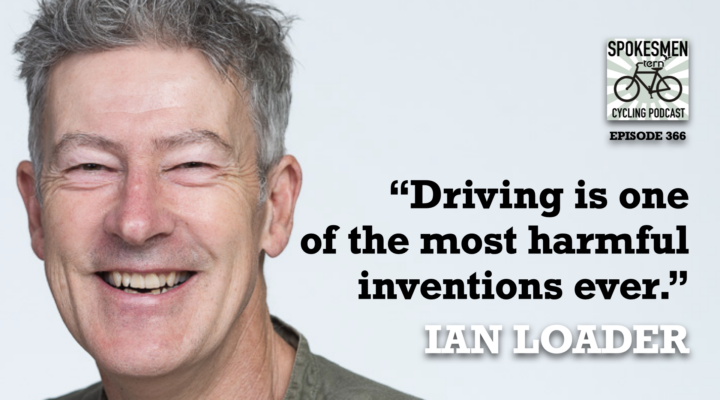
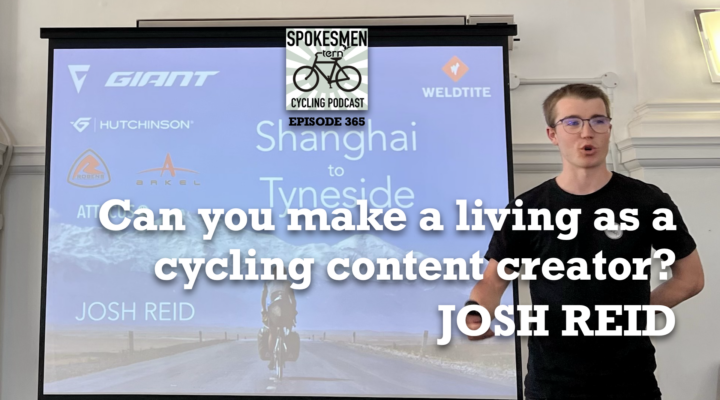
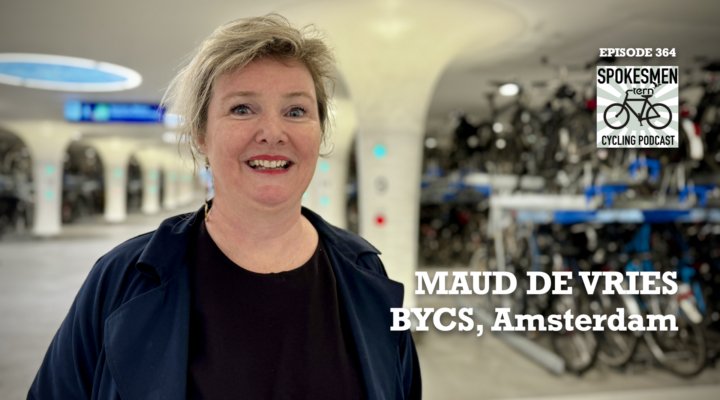
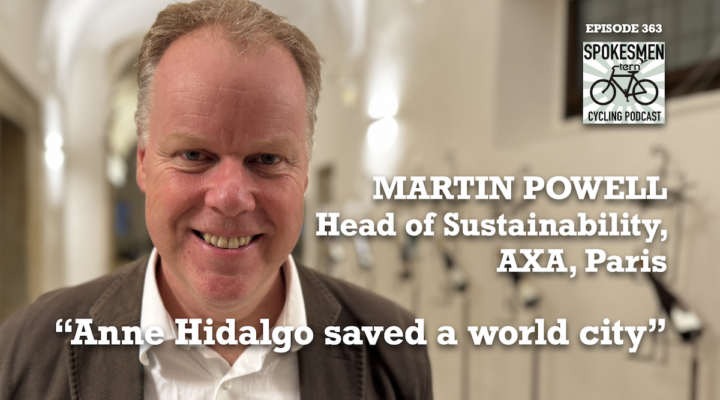
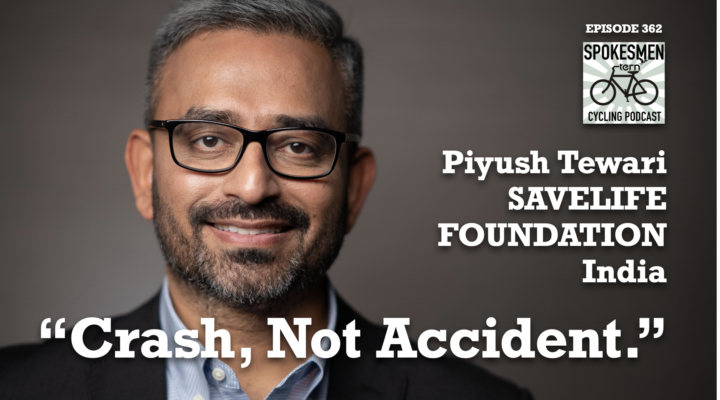
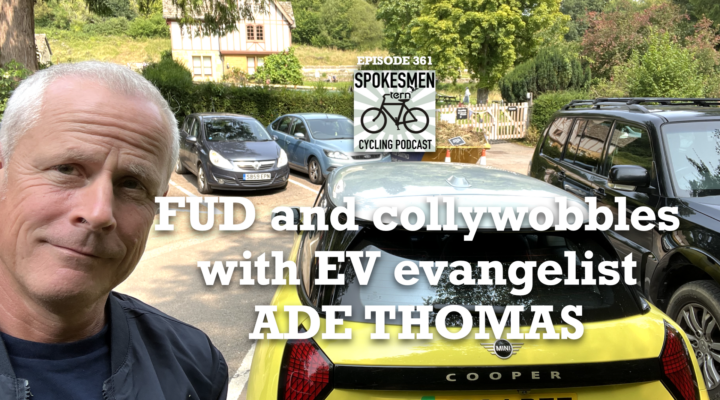
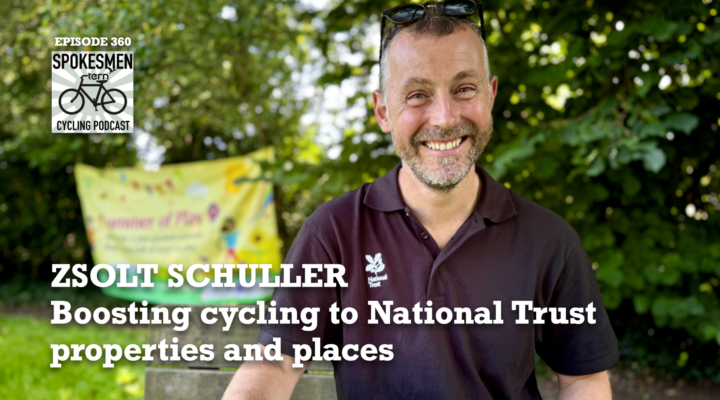
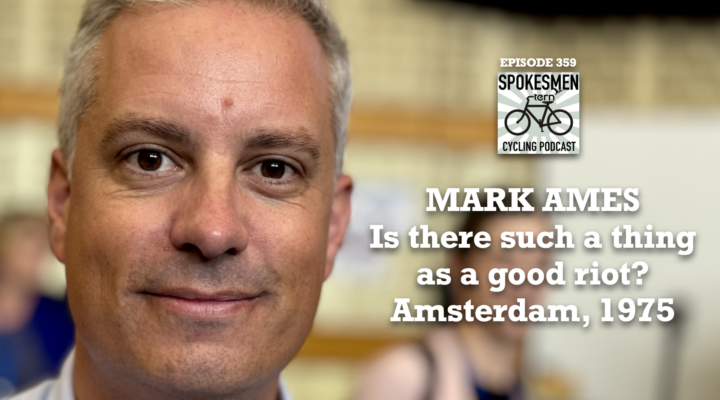
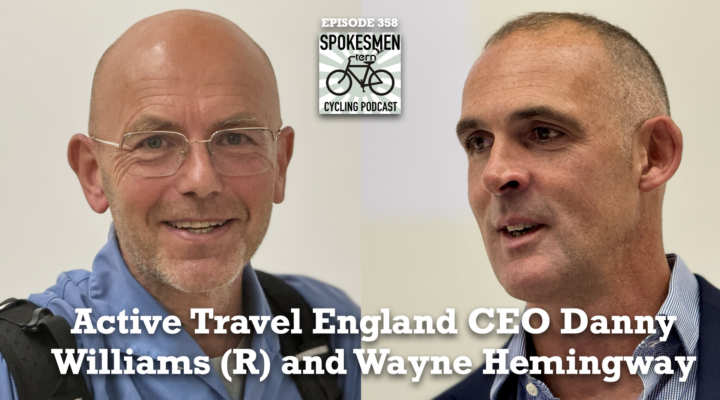
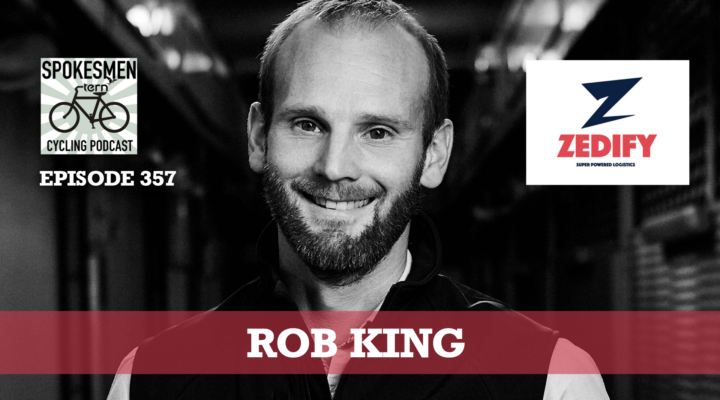
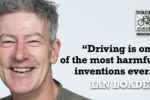
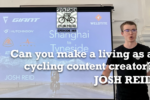
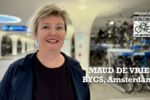
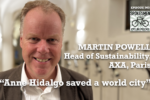
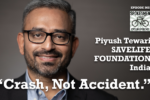

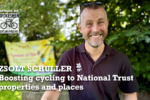
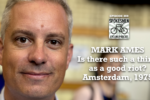
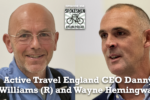
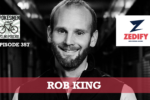
Be First to Comment